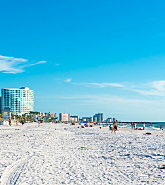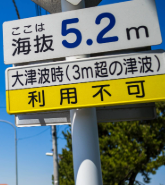Many of the thousands of lives lost in Super Typhoon Haiyan could have been saved if a proper storm surge forecast had been provided, and if that forecast had been turned into effective evacuations moving people to buildings inland out of reach of the surge.
The civil defense personnel were there on the ground and Philippines has a sophisticated system of disaster management. The civil defense personnel had been told to ensure zero casualties, but had not been given the information by which to achieve this goal. In previous storms lives had been lost in flash flooding and landslides, but Haiyan was moving fast, and rainfall was not a principal hazard.
The Category 5 storm was well forecasted in the days and hours leading up to landfall. Knowing the structure of the advancing wind field, the height and extent of the accompanying storm surge could also have been forecasted. If people had been moved out of the surge zone, that would have significantly increased their chances of survival, but even then they would need protection from collapsing buildings and missiles propelled by the extreme wind speeds.
Maybe people who lived in low lying coastal areas on Leyte may have been lulled by what happened the last time a Super Typhoon (named Mike) was heading towards their island in 1990 when it weakened significantly in the hours before landfall.
Even on the most active Category 5 coastlines, as those of the eastern Philippines, extreme storms are still relatively rare and it is all too easy to forget the threat they bring. Houses that provided protection in lesser storms may prove highly vulnerable in a Category 5 cyclone and its accompanying storm surge.
Super-Typhoon Haiyan is not the first Category 5 cyclone to cause devastation to an island community. Something similar to Haiyan in Leyte happened on October 10, 1780 when an intense Category 5 hurricane hit Barbados. The winds stripped the bark off trees and were said to have left no tree standing (interpreted as reflecting winds over 200 mph). “Every house on the island” was destroyed as well as all the military forts. On one such fort the wind carried a heavy cannon for 30 meters. Many people took refuge in the stone churches on the island, but almost all of these were destroyed by the wind. The final death toll on Barbados was 4,500. The storm continued on its track to spread destruction through St. Lucia, Martinique, and Guadeloupe.
Following the Haiyan disaster, a series of international actions are now needed with a focus on ensuring life safety:
- Identify all those coastlines with the potential to be hit by Category 5 tropical cyclones. To gain this intensity requires both very warm sea surface temperatures (SSTs) and a deep thermocline (layer of warm near-surface water), as otherwise the winds and waves from the storm draw cooler waters to the surface and switch off the circulation. The region with the highest SSTs and deepest thermocline is the Pacific immediately to the west of the Philippines. However many tropical and subtropical coastlines can expect to see occasional Category 5 storms: in the Atlantic this includes most of the islands of the Caribbean, the Atlantic Coast of Mexico, the coastlines of Florida and the Gulf and southeast U.S.
- For each coastline, work is required to map the maximum potential storm surge flood height, associated with the most extreme credible storms. This will require building a stochastic tropical cyclone event set, with a focus on the most extreme events and running it with a coupled ocean-atmosphere storm surge model. These flood heights will likely be much higher than the typical 100 year return-period flood heights, used for flood insurance in the U.S., for example. This “maximum storm surge flood extent” should be publicized on local maps. For an intense storm no one should be permitted to stay in their property if it lies within the maximum flood extent.
- Evacuation options should be evaluated, according to the number of people living in the maximum flood zone. For continental coastlines, evacuation inland will be the preferred option, but there are particular challenges for coastal cities and small islands. As highlighted by Hurricane Katrina and New Orleans, preparations should be made to protect those who choose to stay.
- Where evacuation is not a complete option, hardened shelters need to be provided, guaranteed to survive the strongest possible winds in a tropical cyclone, and situated above the maximum potential flood extent. These shelters need to have enough accommodation to house all the local population for the few hours in which it takes the storm to pass, as well as containing water and food for at least 2-3 days. These shelters could be in the basements of community centers, businesses or hotels. Shelters could also be constructed in basements beneath houses, exactly as in tornado country. As reconstruction gets underway in the Philippines, international donors should insist that among the replacement buildings there are enough that could also act as future Super Typhoon shelters. Otherwise the conditions will be created for a repeat of this catastrophe sometime in the future.
Category 5 cyclones bring a range of perils—wind, surge and flash flooding. It is particularly dangerous to focus on only one peril at a time. People sheltering from the winds of Super Typhoon Bopha in the southern island of Mindanao less than a year ago were drowned by flash floods. On the south coast of the main Bahamas island of New Providence, I once found a school labeled as a designated hurricane evacuation center, but situated only 2–3 feet above sea level.
Haiyan has highlighted that Category 5 cyclones can present some special challenges. However, given our understanding of disaster management and what can be forecasted and delivered there is now really no excuse for having high casualties in a landfalling tropical cyclone anywhere in the world.






